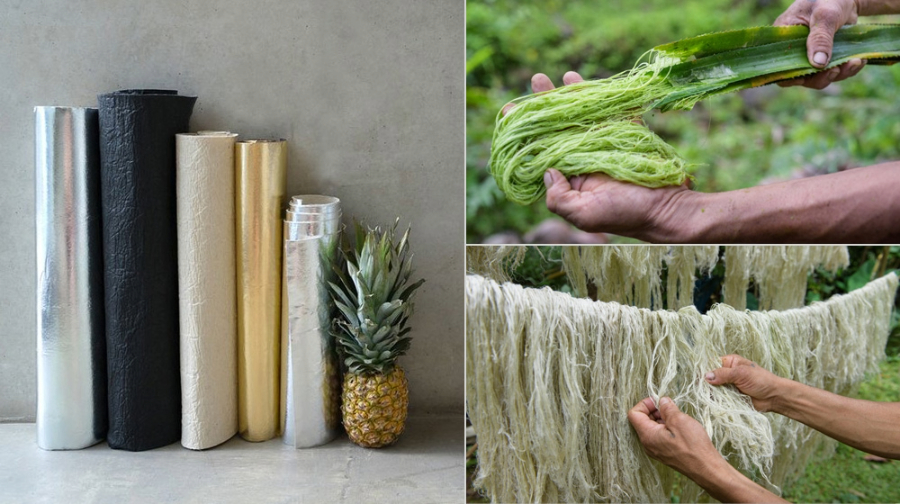From Orchard to Wardrobe: Transforming Fruit Waste into Fashion’s Green Revolution
In today’s world, sustainability is a paramount concern, as we grapple with the environmental challenges caused by the fashion industry. Fast fashion and the extensive use of non-biodegradable materials have taken a toll on our planet. However, there’s a glimmer of hope on the horizon: fabrics made from fruit waste. These innovative textiles offer an environmentally friendly alternative that can help us build a more sustainable future. In this blog post, we’ll explore the fascinating world of fruit waste fabrics and their potential to revolutionize the fashion industry.
The Problem with Conventional Textiles
Conventional textile production relies heavily on synthetic fibers like polyester and nylon, as well as natural fibers like cotton. These materials come with their own set of environmental problems. Synthetic fibers are derived from fossil fuels, contributing to greenhouse gas emissions and plastic pollution, while the cultivation of cotton often requires vast amounts of water and pesticides, causing soil degradation and harm to ecosystems. Additionally, the textile industry produces vast amounts of waste and hazardous chemicals in the dyeing and finishing process. All of these factors make it crucial to look for sustainable alternatives.
The Birth of Fruit Waste Fabrics
Fruit waste fabrics are an ingenious solution that addresses many of the issues associated with conventional textiles. They are typically made from the discarded parts of fruits, such as peels, seeds, and stems, which are usually treated as waste in food processing. By repurposing these fruit remnants, we can reduce the environmental footprint of both the fashion and food industries.
Piñatex: Derived from Pineapple Leaves
One of the most well-known fruit waste fabrics is Piñatex, made from the fibers found in pineapple leaves. The extraction process doesn’t harm fruit production and provides a valuable source of income for pineapple farmers in tropical regions. Piñatex is biodegradable, lightweight, and has a texture similar to traditional textiles, making it a suitable alternative for various fashion applications.
Orange Fiber: From Citrus Byproducts
Orange Fiber is another remarkable example. It’s produced from the byproducts of the citrus industry, such as orange and lemon peels. This fabric is not only environmentally friendly but also has a silky feel, making it a desirable material for high-end fashion brands.

Source image:https://images.app.goo.gl/9iy2BnVeWGebTATr7
The Benefits of Fruit Waste Fabrics
- Sustainable Production: Fruit waste fabrics use materials that would otherwise go to waste, reducing the environmental impact of fruit processing.
- Biodegradability: These textiles decompose naturally, mitigating the problem of microplastics in our environment.
- Supporting Farmers: Fruit waste fabric production creates additional revenue streams for farmers and promotes sustainable agricultural practices.
- Reducing Chemical Usage: Fruit waste fabrics often require fewer chemicals in the manufacturing process compared to traditional textiles, minimizing the release of harmful substances into the environment.
- Innovation and Collaboration: These fabrics encourage innovation and collaboration between different industries, fostering a circular economy.
The Future of Fruit Waste Fabrics
While fruit waste fabrics offer promising sustainability benefits, there are challenges to overcome, such as scaling up production and addressing cost issues. However, with growing awareness of environmental issues and increasing consumer demand for sustainable products, these fabrics are gaining traction in the fashion industry.
As we increasingly shift our focus towards building a more sustainable future, it becomes evident that fruit waste fabrics are poised to become indispensable players in this transformative journey. These innovative materials offer a dual advantage: they provide a creative outlet for sustainable fashion and contribute significantly to the overarching goal of a circular economy.
Fruit waste fabrics are a testament to human ingenuity, which leverages what was once considered waste to create something beautiful and eco-friendly. Fruits, once their delicious flesh has been consumed, often leave behind a plethora of by-products, from peels and seeds to cores and stems. These seemingly discarded remnants are now being harnessed, processed, and transformed into textiles. This innovation not only mitigates the environmental burden of fruit waste but also aligns with the principles of sustainability and environmental responsibility
In conclusion, fabrics made from fruit waste are not just a fashion trend; they represent a transformative shift in the textile industry towards a more sustainable and eco-conscious future. With increased research and development, these fabrics have the potential to revolutionize the fashion world and reduce the industry’s ecological footprint, offering a glimpse of hope for a greener planet.
Source
- https://textilevaluechain.in/in-depth-analysis/orange-fiber-the-fabric-from-fruit/
- http://op.niscair.res.in/index.php/IJFTR/index
- https://reflowproject.eu/best-practices/pinatex-an-innovative-natural-textile-made-from-waste-pineapple-leaf-fibre/
- https://oecotextiles.blog/2014/06/18/do-we-exaggerate-the-dangers-of-conventional-fabrics/
- https://www.4tify.co/blog/from-fruit-to-fabrics-part-2

